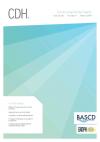Community Dental Health

- Cover Date:
- March 2019
- Print ISSN:
- 0265 539X
- Electronic ISSN:
- 2515-1746
- Vol:
- 36
- Issue:
- 1
Systems science and oral health: Implications for Dental Public Health?
doi:10.1922/CDH_4470Broomhead08
Systems science methods offer an alternative way to approach problems within Dental Public Health by encouraging the consideration of
the wider systems and structures in which oral health problems exist. Through such an approach, and consideration of interacting systems
over multiple hierarchical levels, it may be possible to better understand the complexity associated with oral health related outcomes,
and to improve theoretical understanding of these relationships. Simulation methods associated with systems science can also be used to
help model and capture these real-world problems, and to help test the interactions associated with different elements of a system. The
aim of this review is to summarise the concepts behind systems science approaches, and what they can offer the field of Dental Public
Health. This will include an overview of the way systems science can approach problems associated with complexity, and the benefits
these approaches can have. The main methods associated with the field will then be reviewed, along with examples of their application.
This paper will then outline some of the main implications, both conceptual and methodological, that adopting systems science methods
may have for Dental Public Health. Finally, the challenges associated with systems science will also be presented. It is hoped that this
review will highlight the benefits of systems thinking, and how it can add to our conceptual knowledge of the contexts in which complex
health problems are embedded.
Keywords: Systems science; dental public health; oral health; complexity
- Article Price
- £15.00
- Institution Article Price
- £
- Page Start
- 55
- Page End
- 62
- Authors
- Broomhead T, Baker SR
Articles from this issue
- Title
- Pg. Start
- Pg. End
- Editorial:‘No simple solutions, no single ingredient’: Systemsorientated approaches for addressing Wicked Problems in population oral health
- 3
- 4
- Dental Public Health in Action: The use of the NICE ten step model to conduct an oral health needs assessment in South Yorkshire and Bassetlaw
- 5
- 8
- Caries-preventive efficacy of a supervised school toothbrushing programme in Northland, New Zealand
- 9
- 16
- Socioeconomic Variation in the association between Malocclusion and Oral Health Related Quality of Life
- 17
- 21
- Low rates of dental attendance by the age of one and inequality between local government administrative areas in England
- 22
- 26
- The relationship between body mass index and oral health status among Saudi adults: a cross-sectional study
- 27
- 32
- The acceptability of fluoride varnish and fissure sealant treatments in children aged 6-9 delivered in a school setting
- 33
- 38
- Interventions to reduce socio-economic inequalities in dental service utilisation – a systematic review
- 39
- 45
- The Boundaries between Caries and Periodontal Diseases. What are the Implications for Education in Dental Public Health? Proceedings of EADPH/SESPO Pre-Congress Workshop held on Wednesday, 17 October 2018 at The Centro Cultural Sa Nostra Congress Cen
- 63
- 86
